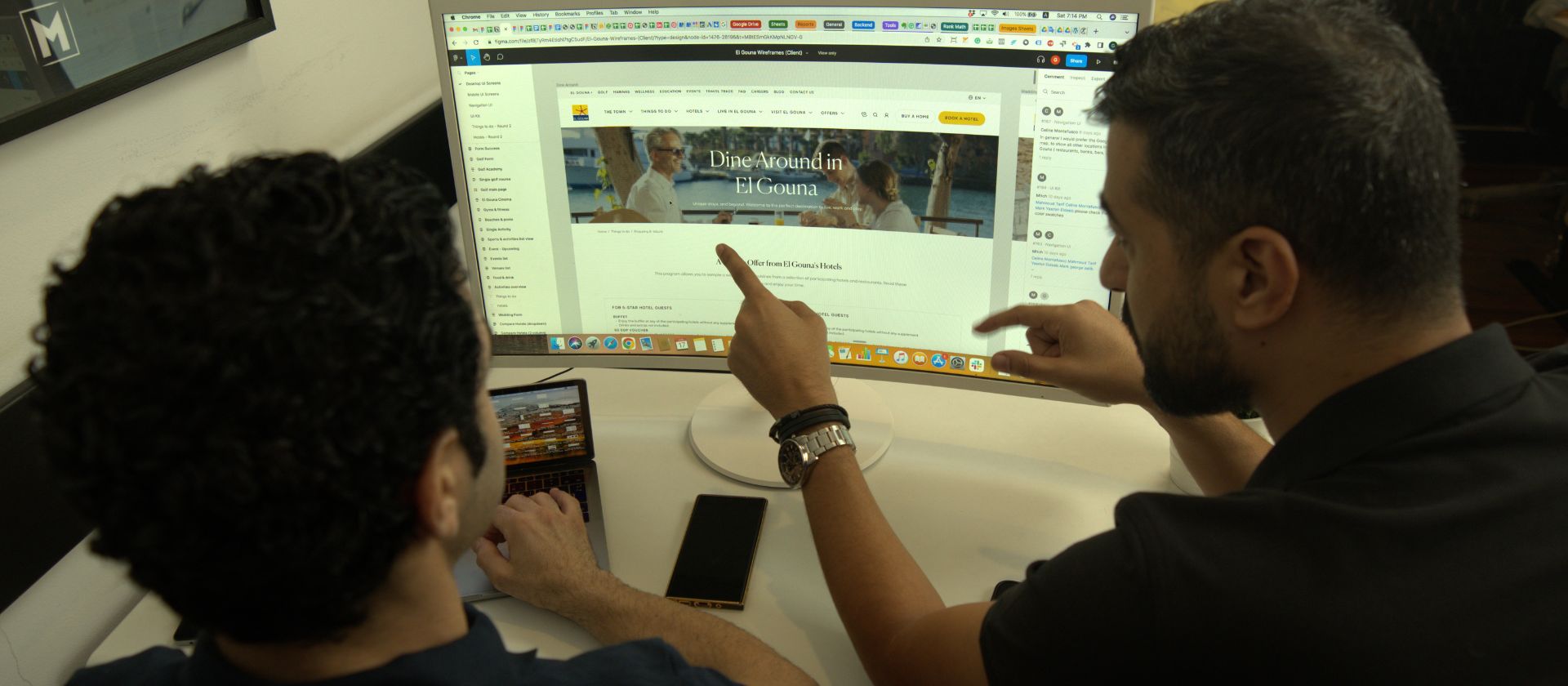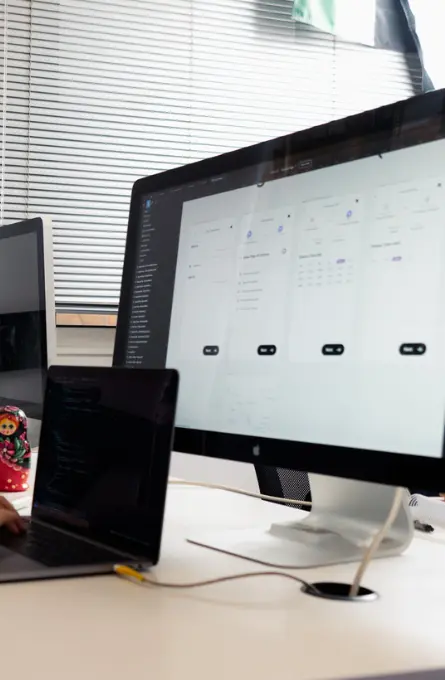In the previous blog post, we explored the potential of the Saudi e-commerce market and the huge opportunities it presents for businesses seeking to expand their reach in the GCC Region.
Today, let’s dig deeper into the critical aspects that are crucial to navigating and succeeding in this dynamic market from a marketing perspective.
We will be discussing the following points:
- Consumer behavior towards e-commerce in Saudi Arabia.
- How customers discover new products in Saudi Arabia.
- Role of Social Media in the Saudi E-commerce Market.
- Emerging technologies and trends in Saudi Arabia’s e-commerce market.
- Payment Options in the Saudi E-commerce Market.
- Challenges to Overcome in the Saudi E-commerce Market.
Let’s dive in.
Consumer Behavior in the Saudi E-commerce Market

As Saudi Arabia’s e-commerce market continues to grow, it’s important to understand the changing behavior and the needs and wants of Saudi consumers when it comes to online shopping.
Here are some of the key buying habits of Saudi consumers:
- Convenience is key: Saudi consumers seek ways to make shopping more convenient. They are more likely to shop at online stores offering free delivery or have a wide selection of online products.
- Product Authenticity and Quality: Saudi consumers are willing to invest in authentic and high-quality products. Ensuring transparent information about sourcing and manufacturing processes can help build trust and motivate customers to purchase.
- Variety of Products: Saudi consumers are looking for a wide variety of products to choose from. Make sure to offer a wide range of products, and ensure that your e-commerce platform provides easy search and filtering options to help customers find what they need.
- Social Proof and Recommendations: Saudi consumers heavily rely on social proof and recommendations from peers when making purchase decisions. Positive reviews, testimonials, and social media influencers’ endorsements can significantly influence their decision.
- Personalization and Customization: By leveraging data analytics and understanding customer preferences and past purchases, you can tailor your offerings to individual customers, making them feel valued and increasing the likelihood of repeat purchases.
- Offer Excellent Customer Service: Saudi consumers expect excellent customer service. Make sure to provide a professional team, and implement live chat and chatbot support. By monitoring feedback and enhance accordingly, you can increase the likelihood of repeat purchases.
These are just some of the key needs and wants of Saudi consumers. Businesses that can understand and cater to these habits will be well-positioned to succeed in the Saudi market.
How customers discover new products in Saudi Arabia

Saudi consumers often discover new e-commerce businesses and products through social media influencers, word of mouth, and online advertising.
Here are some of the most common methods:
- Social media: Social media is a major source of information for Saudi consumers. They use it to stay up-to-date on the latest trends, learn about new products and services, and connect with brands and influencers.
- Online search: Saudi consumers also search online to find new e-commerce businesses and products. They type keywords related to the products they are interested in and then browse the results.
- Email marketing: Saudi consumers often sign up for email marketing lists from brands they are interested in. This lets them receive regular updates about new products, sales, and promotions.
- Word-of-mouth: Saudi consumers are also influenced by word-of-mouth recommendations from friends, family, and colleagues. When they hear about a new product or service they are interested in, they are likelier to check it out.
- Online advertising: Saudi consumers are also exposed to new e-commerce businesses and products through online advertising. They see ads on websites, social media, and email.
By understanding how Saudi consumers discover new e-commerce businesses and products, businesses can better reach their target audience and increase their sales.
Role of Social Media in the Saudi E-commerce Market.
Social media plays a significant role in the e-commerce buying journey for Saudi consumers, with platforms such as Instagram, Snapchat, and TikTok being popular channels for discovering and researching products.
1. Instagram
As a visually-oriented platform, Instagram allows businesses to showcase their products or services through captivating images and videos.
With a large user base in Saudi Arabia, Instagram offers an ideal platform to engage with Saudi consumers.
Influencer collaborations on Instagram also play a significant role in promoting products and driving consumer interest.
Many Saudi consumers rely on Instagram for product discovery, reviews, and recommendations, making it an essential platform for businesses aiming to expand their reach and connect with potential customers.
2. Snapchat
Snapchat is another popular platform among Saudi consumers, particularly the younger demographic.
While known for its short content, Snapchat has evolved to include features such as Discover and Spotlight, where businesses can showcase their products or services through engaging and interactive content.
By leveraging Snapchat’s AR (Augmented Reality) capabilities, businesses can provide unique and immersive experiences to users, allowing them to try on products or explore different offerings virtually.
With its emphasis on real-time and engaging content, Snapchat offers businesses an opportunity to foster brand loyalty and capture the attention of Saudi consumers.
3. TikTok
In addition to Instagram and Snapchat, TikTok has rapidly gained popularity in the Saudi e-commerce market.
Its engaging short-form videos and viral content captivate Saudi users, particularly the younger generation.
Businesses can leverage TikTok’s engaging format, collaborate with influencers, and tap into its e-commerce features.
With TikTok’s algorithm-driven “For You” page and in-app shopping capabilities, businesses can effectively reach and influence Saudi consumers, driving brand visibility and e-commerce growth in the Saudi Arabian market.
Emerging Technologies and Trends in Saudi Arabia’s E-Commerce Market

Artificial intelligence (AI) and machine learning (ML)
AI and ML are used in various ways to improve the e-commerce experience.
AI and ML are used to personalize customer recommendations based on their purchase history, browsing behavior, and other factors. This can help businesses to increase sales and improve customer satisfaction.
AI is also being used to improve customer service. For example, chatbots are used to answer customer questions and resolve issues quickly and efficiently.
AI is also being used to detect fraud. For example, AI can be used to identify suspicious transactions and prevent fraudsters from stealing money from customers.
Augmented reality (AR) and virtual reality (VR)
AR and VR are being used to create more immersive and engaging shopping experiences. For example, AR can be used to let customers try on clothes or furniture virtually, and VR can be used to create virtual shopping malls.
AR and VR can also be used to provide customers with more information about products. It can be used to show customers how a product will look in their homes, and VR can be used to take customers on a virtual product tour.
Blockchain technology
Blockchain is a distributed ledger technology that is being used to create more secure and transparent transactions. This can help businesses to build trust with customers and reduce the risk of fraud.
Blockchain is also being used to manage supply chains. This can help businesses to track the movement of goods and ensure that they are delivered on time and in good condition.
Blockchain is also being used to process payments. This can help businesses to reduce the cost of processing payments and improve the customer experience.
Drone delivery
Drone delivery is a new technology that has the potential to revolutionize the way goods are delivered.
Drones can deliver goods to customers quickly and efficiently, and they can reach areas that are difficult to access by traditional means.
Drone delivery is still in its early stages of development, but it has the potential to have a major impact on the e-commerce market in the coming years.
Drone delivery can also help businesses to reduce their carbon footprint.
These are just a few of the emerging technologies and trends that may shape the e-commerce market in Saudi Arabia in the coming years.
As these technologies continue to develop, they will have a significant impact on the way we shop online.
Payment Methods in Saudi Arabia E-Commerce Market

The preferred payment method for Saudi consumers in online shopping is cash on delivery (COD). Credit cards, debit cards, and online wallets follow this.
1. Cash on delivery
COD is the most popular payment method for online shopping in Saudi Arabia. This is because it offers a number of benefits to consumers, such as:
- Convenience: Consumers do not need to have a credit card or debit card to use COD.
- Security: Consumers can inspect the product before paying for it.
- Peace of mind: Consumers know they will not be charged if they do not receive the product.
2. Credit cards
Credit cards are the second most popular payment method for online shopping in Saudi Arabia. This is because they offer a number of benefits to consumers, such as:
- Rewards: Many credit cards offer rewards programs that can save consumers money.
- Purchase protection: Credit cards offer purchase protection, which can help consumers if they purchase a defective product or not as described.
- Convenience: Credit cards can be used to purchase online and in stores.
3. Debit cards
Debit cards are the third most popular payment method for online shopping in Saudi Arabia. This is because they offer a number of benefits to consumers, such as:
- Debit cards offer the same level of security as credit cards.
- Debit cards can be used to make purchases online and in stores.
- Consumers know they are not spending more money than they have in their bank accounts.
4. Online wallets
Online wallets are the fourth most popular payment method for online shopping in Saudi Arabia. This is because they offer a number of benefits to consumers, such as:
- Online wallets can be used to make purchases on a variety of websites.
- Online wallets offer a high level of security.
- Consumers know that their financial information is safe.
The preferred payment method for Saudi consumers when shopping online is still evolving.
As the e-commerce market in Saudi Arabia continues to grow, we can expect to see new payment methods emerge.
Challenges Facing Businesses in the E-Commerce Market in Saudi Arabia

So far, we viewed customer preferences and the Saudi government’s support for e-commerce businesses. Now let’s discuss the biggest challenges facing e-commerce businesses in Saudi Arabia:
- Lack of trust: There is a lack of trust among consumers in Saudi Arabia regarding online shopping. This is due to a number of factors, including the fear of fraud, the lack of transparency, and the lack of customer support.
- High cost of shipping: The cost of shipping goods to Saudi Arabia is high. This is due to a number of factors, including the distance, the weight of the goods, and the customs fees.
- Cultural barriers: Some cultural barriers can make it difficult for e-commerce businesses to succeed in Saudi Arabia. For example, some consumers in Saudi Arabia are reluctant to purchase goods online from businesses that they are not familiar with.
- Lack of infrastructure: The Saudi postal service can be slow and unreliable, making it difficult for consumers to receive their online orders on time (Source: Postal Development Report).
However, the Saudi postal service is currently working on enhancing its services, ensuring that consumers can receive their online orders in a timely manner.
Despite these challenges, the e-commerce market in Saudi Arabia is growing rapidly.
E-commerce businesses that can overcome these challenges can be successful in Saudi Arabia.
In Conclusion
To all visionary business owners, entrepreneurs, and dreamers, the Saudi e-commerce market has limitless potential.
The Saudi consumer, eager and knowledgeable, opens opportunities for businesses that can cater to their needs and desires with finesse and flair.
Entering the Saudi e-commerce market successfully requires a deep understanding of consumer behavior, effective marketing strategies, and adaptation to emerging trends and technologies.
By navigating these challenges and capitalizing on the huge opportunities, businesses can unlock growth and success in the dynamic Saudi e-commerce market.
So, dear business owners, the time is now. Unleash your creativity, ignite your passion, and embark on this grand adventure into the heart of the Saudi e-commerce market.
Best of luck on your journey!




















